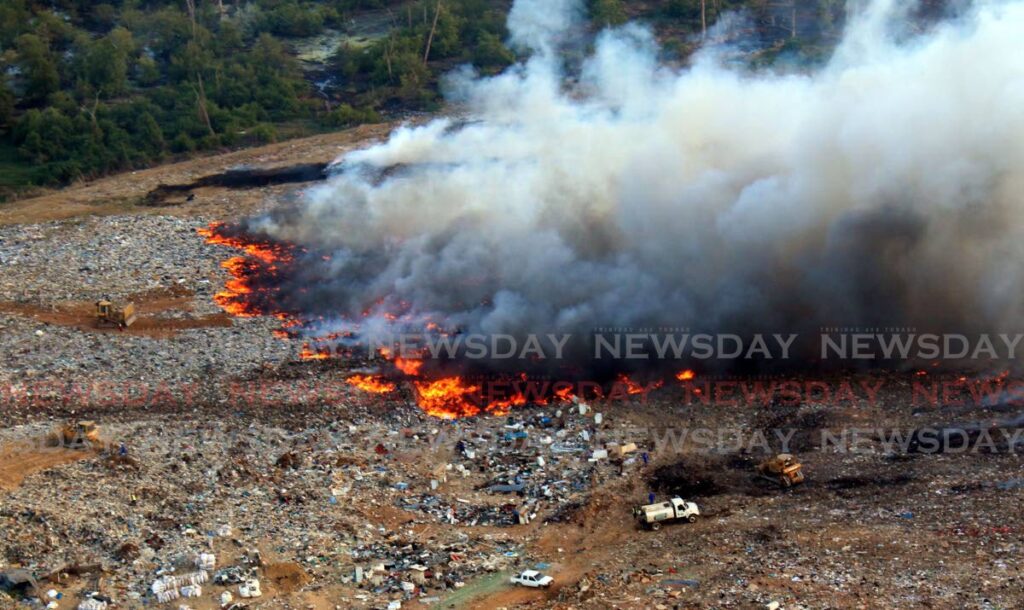Reducing harmful e-waste for a cleaner future

VISHANNA PHAGOO
E-waste made up of cellphones, computers, tablets and other electronic devices pose a great threat to the environment and water supplies, if not disposed of properly. They release toxic chemicals and contain hazardous materials that harm wildlife, marine life and humans and is becoming the largest stream of waste.
In the Global E-waste Monitor Report 2021, 57.4 million metric tons of e-waste was recorded and is increasing by two metric tons, annually.
Director of the Basel Convention Regional Centre for Training and Technology for the Caribbean (BCRC) Jewel Batchasingh said, "According to the World Bank, there were 144 cellphones per 100 persons in TT as of 2020."
On Friday, the BCRC announced its demonstration of the environmentally sound management of used and mobile phones in TT, an initiative to help decrease these numbers. The BCRC's goal is to receive 10,000 cellphones with this programme.
The initiative was launched at the the Environmental Management Authority (EMA) office, Elizabeth Street, Port of Spain and is funded by the secretariat of Basel, Rotterdam and Stockholm Conventions. The recycling bins were given by Piranha International Ltd (PIL), a private environmental company that is also responsible for wiping all information off the cellphones before exportation.
Director of PIL Nadine Lakatoo said, as of right now, the amount of e-waste is not recorded from the landfills but, hopes it can be achieved with this programme.
She explained the process and said, "Every part of the phone is recovered and sent to Responsible Recycling (R2) certified recycling companies."
Lakatoo said if the phones are in good condition to be reused, PIL will have discussions with BCRC before determining what will be done with them.
Minister of Planning and Development Pennelope Beckles congratulated BCRC on the initiative and for acquiring US$20 million for waste and chemical management for the Caribbean. She said this project can contribute to social and economic development as the effects can be beneficial to every one. She urged people to try and make their devices last longer as it can help with the amount of e-waste that is affecting the ecosystem.
Beckles said, "Let us set the example and encourage our families, friends and communities to participate in this collection drive to ensure our cellphones are properly disposed of in order to save and maintain our very precious environment."
Also at the launch was the ministry's permanent secretary, Nicolette Duke, who noted SWMCOL's ongoing work at the Guanapo, Beetham and Forres Park landfills.
She added that there were plans of transforming the Forres Park Landfill to an engineered municipal solid waste landfill.
"The new landfill will provide a sustainable long term environmental solution for disposing the nation's waste, improving the quality of life for the residents in the surrounding areas and increasing employment opportunities for local contractors and informal sector."
Those interested in recycling their cellphones are asked to look for the programme's mascots, Cellwyn, a blue cellphone and Cellma, a pink cellphone with a recycling logo in the middle to better spot where the drop off locations are.
The cellphones can be taken to:
BCRC-Caribbean – 8 Alexandra Street, Port of Spain
EMA – Adesh Drive, San Fernando
Bmobile: Westmall, Westmoorings, Trincity Mall, Trincity, Centre City Mall, Chaguanas, Scarborough, Tobago
Digicel: Excellent City Centre, Port of Spain, Eastern Main Road, Sangre Grande, C3 Centre, San Fernando, Penal

Comments
"Reducing harmful e-waste for a cleaner future"